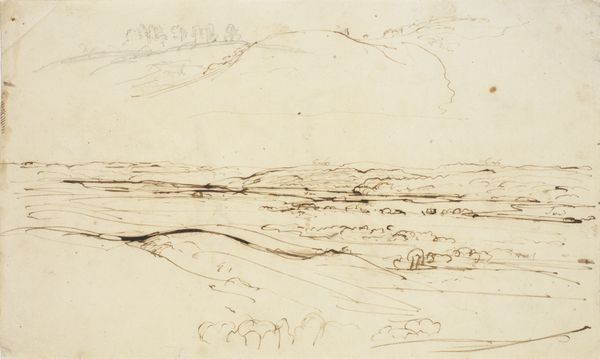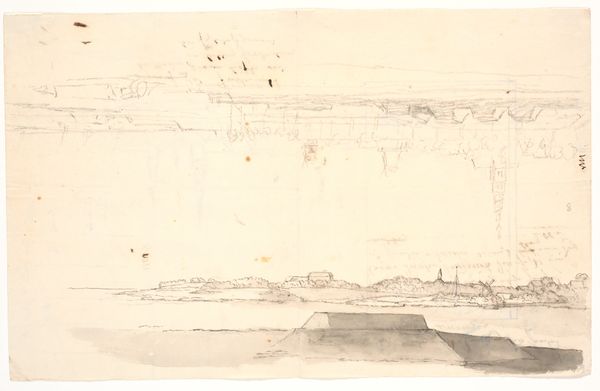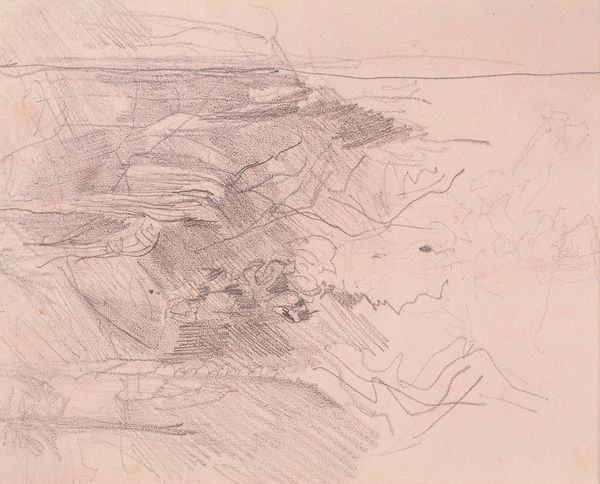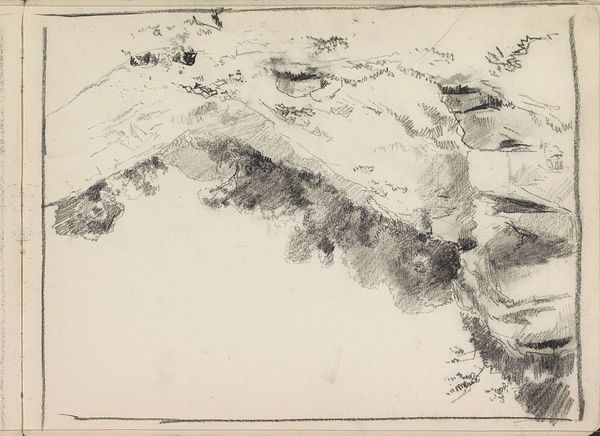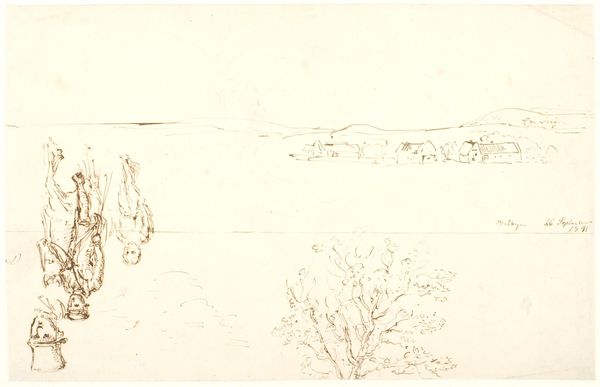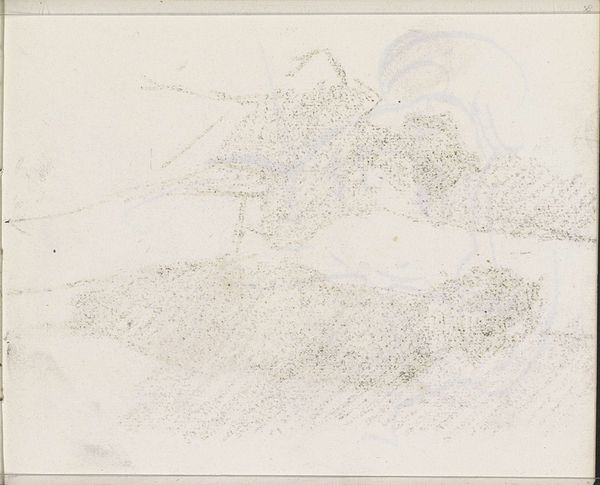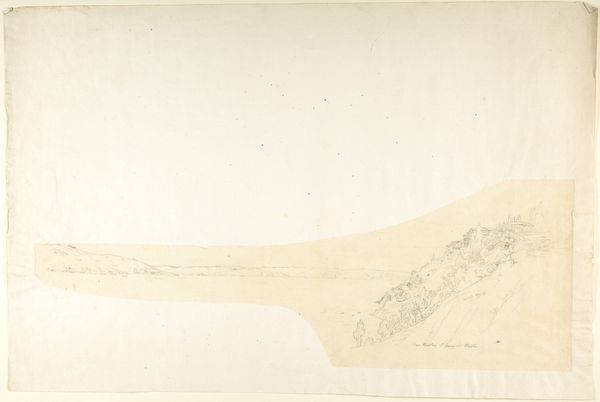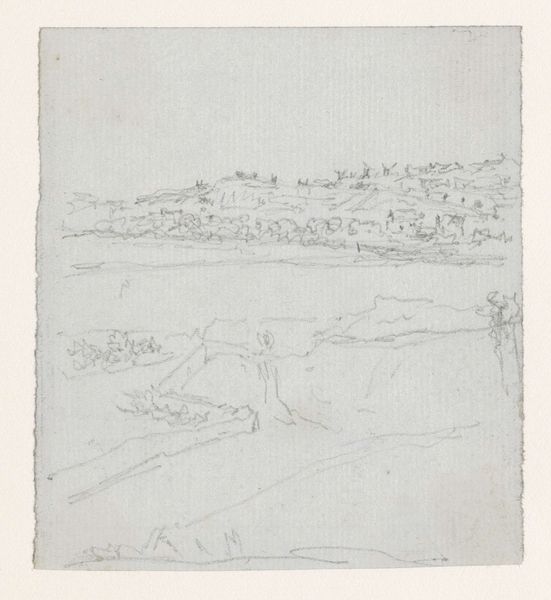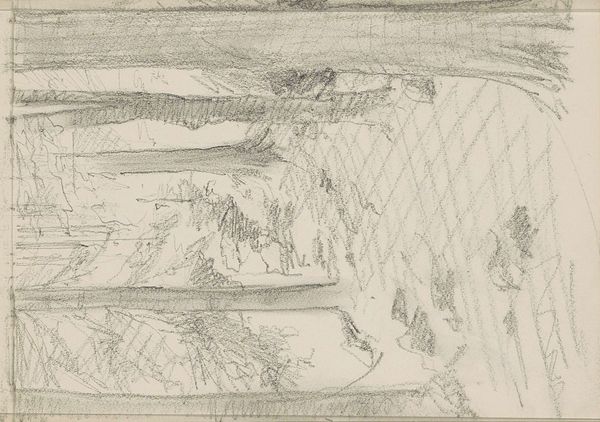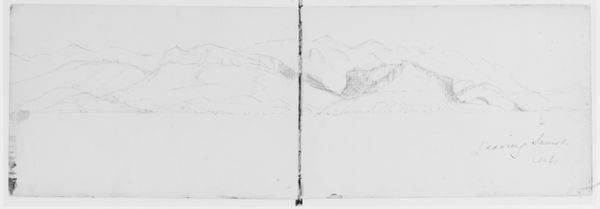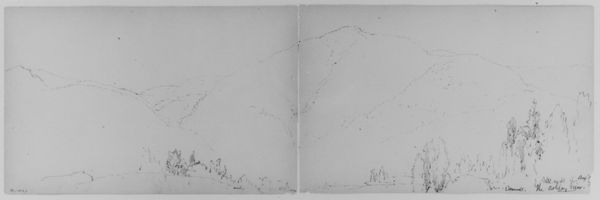
drawing, pencil
#
drawing
#
landscape
#
romanticism
#
pencil
#
watercolor
Dimensions: 6 1/4 x 10 1/2 in. (15.88 x 26.67 cm) (image)
Copyright: Public Domain
Editor: This is a pencil drawing titled "Sketchbook- English Landscapes" by J.M.W. Turner, from 1828. It has this incredible ghostly quality, like a memory fading at the edges. What do you see in this piece? Curator: I see the Romantic era’s fascination with the sublime – nature's overwhelming power and the individual's place within it. Turner, particularly in his sketches, grapples with the social and political upheaval of his time, specifically the Industrial Revolution, by contrasting it with the quiet beauty of nature. What do you make of the landscape's apparent emptiness, and the artist’s emphasis on place? Editor: I didn't even think about that... It almost seems untouched, maybe idealised? Does that speak to the era at all? Curator: Absolutely. Remember that Turner’s England was undergoing massive transformation. These landscapes become subtle acts of resistance, preserving a vision of the countryside at risk of being lost or altered beyond recognition. What effect might that have had on its intended audience? Editor: It could evoke feelings of nostalgia, maybe even anxiety about the future. Are the sketches, in their way, a form of social commentary, then? Curator: Precisely! By depicting these specific English landscapes, Turner’s creating a statement about identity, national heritage, and environmental concerns during a time of great social change. Editor: That’s such an interesting take. I definitely see it differently now. I wouldn’t have considered that landscape art could engage with identity or social anxieties in that period. Curator: It shows that even seemingly simple landscapes can carry significant political weight and reflect societal shifts when seen through an intersectional lens.
Comments
No comments
Be the first to comment and join the conversation on the ultimate creative platform.
